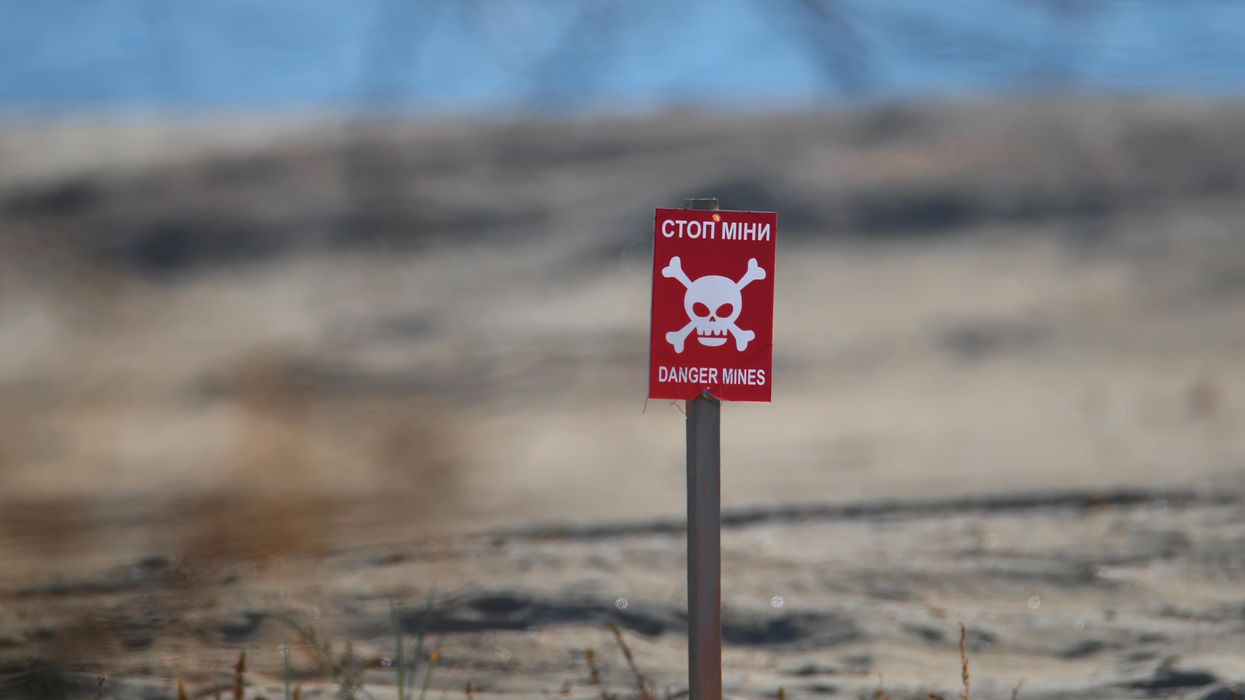It was bound to happen, and it must be stopped. The accursed word “credibility” — perhaps the most dangerous in the entire U.S. foreign and security policy vocabulary — has entered the debate on Ukraine.
The United States, we are told, must give military support to Ukraine not because Ukraine itself is a vital U.S. interest or worth the threat of a catastrophic war with Russia, but because otherwise U.S. “credibility” will suffer, and China, Iran and other unnamed adversaries will be “emboldened.”
“Credibility” is the American term for what the British Empire called “The Prestige of the British Name.” This reflects a real truth, which is that empires operate partly on the basis of bluff, and their elites are well aware of this. Since they extend over such huge territories, if all or even many of their subjects or enemies united against them, they would be overwhelmed. They feel the need therefore to engage in spectacular displays of strength against particular local rivals in order to persuade everyone else to stay in line.
The problem is that this can help lead the empires into local commitments that are totally unjustifiable in their own terms. “Credibility” then becomes a self-generating engine of conflict, because the initial commitment increases the amount of “credibility” that will be lost if the United States subsequently withdraws or suffers defeat. So to avoid this, America has to increase the commitment, raising the credibility stakes still higher — until eventually an American administration is faced with the choice between serious humiliation or going to war. Of course, the tragic irony is that if America suffers failure in that war — as it so often has —the resulting loss of U.S. “credibility” is far greater than if America had never got involved in the first place.
“Credibility” was a key part of the process by which the Johnson administration was dragged, step by unwilling step, into the disaster of Vietnam. The escalating, and failed, moves by the Clinton administration to bring about the fall of Saddam Hussein created an issue of U.S. “credibility” that was a central motivation for the invasion of Iraq in 2003.
American policymakers and commentators who had no understanding whatsoever of Syria and no plan whatsoever for how to manage the country, nonetheless pressed the Obama administration (unsuccessfully, thank heaven) to intervene there because America needed to “show strength” and otherwise its “credibility” would suffer. In Afghanistan, the United States fought on for years after it was clear that its goals could not be achieved for fear that withdrawal would damage its “credibility.” The result was that the eventual, inevitable withdrawal was far more humiliating than would have been the case if the Obama administration had pulled out a decade earlier.
Deeply damaging though they were, these cases pale insignificance compared to the risk that “credibility” could lead America step by step into war with Russia over Ukraine. Given the immense preponderance of Russian ground forces in the region, the likelihood is that America would suffer initial defeat and Russia would occupy as much of Ukraine as it chose. The Biden administration would then face the choice between accepting a ceasefire and political settlement in Ukraine on Russian terms, despatching the entire U.S. Army and most of the Air Force to launch a counter-offensive to drive Russian forces from Ukraine — or threatening a resort to nuclear weapons.
Apart from all the other appalling dangers involved in such a scenario, no greater geopolitical and strategic gift to China could possibly be imagined. Even without actual war with Russia, the dispatch of huge U.S. military forces to Europe would drastically weaken Washington’s position in the Far East. Those who advocate U.S. military commitment to Ukraine in order to impress China are therefore making as basic and obvious a strategic mistake as can easily be imagined. If the establishment really regards China as the “peer competitor” of the United States, then it must concentrate its resources in response.
Having identified Germany as the greatest threat to Britain in the years before World War I, the British elites concentrated British power to meet that threat, and in accordance with that strategy reduced British commitments elsewhere through compromises with other powers. Britain did not seek to impress Berlin with British “strength” by picking quarrels with America or Russia. That was the way that Wilhelmine Germany behaved — with consequences for Germany that are obvious and were obvious to wise German observers at the time.
The high command of the U.S. military is well aware of this, and President Biden’s recent statements ruling out America going to war for Ukraine were made with full Pentagon support. Then again, no-one in Washington in 1960 was proposing to send a U.S. army to fight in Vietnam; but having once stepped onto the “credibility” conveyor belt they were unable to get off it again.
Today, while no senior member of the U.S. establishment is advocating sending troops to Ukraine, leading Democratic and Republican members of the U.S. Congress and many commentators are proposing that America take the first steps onto the conveyor belt. This begins with the argument that Washington should conduct an immediate massive shipment of sophisticated military equipment to Ukraine. Meanwhile, the Ukrainian lobby continues to push Washington to name Ukraine a “Major Non-NATO Ally” of the United States.
President Putin and the Russian government have designated such a U.S. military move into Ukraine (even without formal NATO membership) as a central threat to vital Russian security interests, so it would be very difficult for Moscow not to resort to war in response. And when Putin asked his generals for advice in this regard, they would be bound to say that militarily speaking, it made sense for Russia to strike immediately and with overwhelming force before the Ukrainian forces could deploy their new weaponry and learn how to use it. In other words, far from deterring a Russian invasion, such a U.S. move toward NATO expansion would provoke it.
Recognizing the difficulty the Ukrainians would have with massive amounts of new equipment, and as a supposedly added disincentive to a Russian attack, it is now being floated by some that America should send “special operating forces” to Ukraine to train and help the Ukrainian defense. This would be a repeat of U.S. mistakes in South Vietnam before 1965, but with much higher stakes on the table. For such troops could not possibly train and equip the Ukrainians quickly enough to defeat a Russian invasion (something of which the Ukrainian army is in any case incapable however heavily it is armed by America); but if any were killed or captured Washington would be faced yet again with the same deadly choice between humiliation and escalation.
The crazy thing is that a perfectly good political alternative to these terrifying scenarios exists: a peace settlement for eastern Ukraine based on the Minsk II agreement of 2015 advocating guaranteed autonomy for the region within Ukraine. This indeed remains official U.S. policy — but since 2015 no U.S. administration has done anything to persuade Ukrainian governments to take the steps necessary to move the process forward. It is to this goal that members of the U.S. establishment should bend their minds, instead of regurgitating yet again the provenly poisonous pap of “credibility.”
















